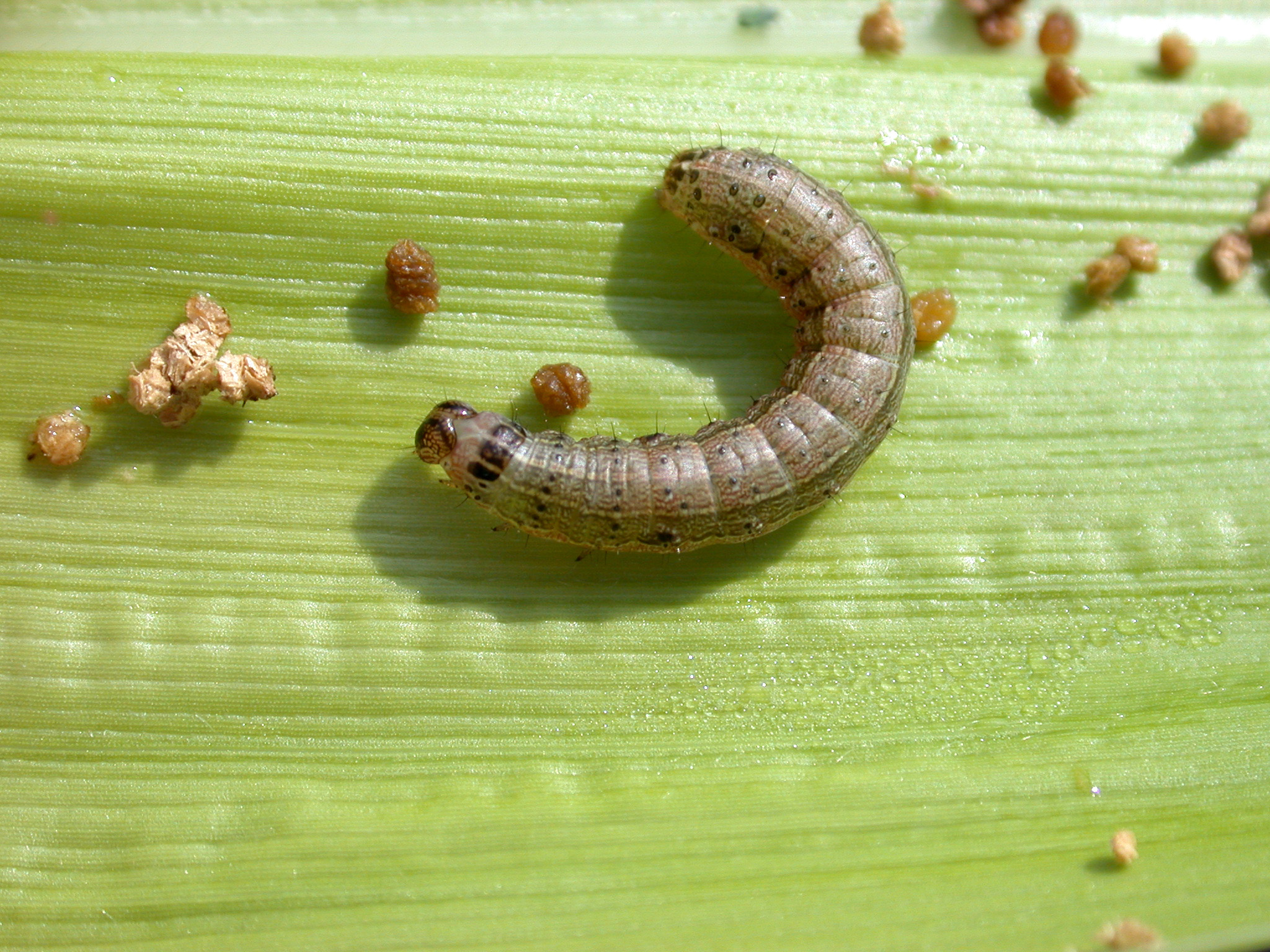In recent weeks, fall armyworm infestations have been decimating some soybean and forage crops in Kentucky. The University of Kentucky Extension Entomologists, recently reported large FAW moth captures (Pest News). This likely occurred in southern Indiana counties as well, although we have no reports of this to cite. Like a very similar species, the true armyworm, FAW behavior is much the same in that they can consume large amounts of foliage as they move together in large numbers. One major difference, whereas armyworm feeds primarily on grasses (e.g., corn, small grains, fescue), fall armyworm will feed on a much broader range of plants, including both grasses and broadleaves. Incidentally, this is the same insect that has been laying waste to corn and other crops across sub-Saharan Africa for several years now after reaching the continent in 2016 – it’s an after-thought for most of us in the corn belt in a typical year, but definitely one of the top pests of grain production worldwide.

Late-instar fall armyworm larva on corn. Once they have reached this size, the caterpillars are very difficult to kill with insecticides. (Photo Credit: John Obermeyer)
We warned of FAW last August as well, and some very impressive outbreaks followed. While this year is not guaranteed to follow suit, things are looking ominous at this point. In Indiana, those with late-season crops, (e.g., double-crop soybean, forages, cover crops, alfalfa) should be inspecting for feeding damage. This is very important for newly-seeded forages. You have been warned, get them early! Small larvae are relatively easy to control with the maximum label rate of a range of pyrethroids. However, when the worms are about an inch long is when damage is very noticeable and most controls are applied. At this size, they can denude plants rapidly when they are “marching.” Large caterpillar control is difficult, if not impossible, as many found out in 2022. It is not time for panic yet, nor will spraying at this time help with later infestations. It will likely be a month or so before the FAW story of 2023 is told, and this year, a network of moth trappers around the state should provide some earlier warning of heavy flights, so stay tuned!


